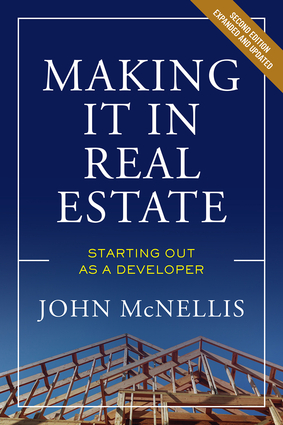Geofence na virtual geographic boundary, defined by GPS or RFID (radio-frequency identification) technology, that enables software to trigger a response when a mobile device enters or leaves a particular area
ULI MEMBER–ONLY CONTENT: Owning retail space has been challenging since the Great Recession. You likely know the reasons why: overbuilding, the internet, rapacious private equity, too many lackluster tenants. You also know that every move you make—every breath you take—is recorded by your mobile phone. This latter circumstance has allowed a clever company, Placer AI, to develop possibly the most useful tool for commercial real estate since Hewlett Packard introduced the HP-12C financial calculator in 1981.
Though Placer’s software is no doubt breathtakingly complex, the tool is—in essence—as simple as a bouncer counting a nightclub’s patrons with a clicker. Placer allows the user to set up a geofence around a shopping center, a retail building, or even a tiny tenant’s space and then calculate that finite area’s walk-in traffic by counting the phones crossing its threshold. By using those phone visits and an algorithm or two, Placer delivers an accurate traffic count of the geofenced area. A Swiss Army knife looks like a spoon compared with the multiple uses this traffic count offers.
 On one side, a landlord can use Placer to prove her center has more foot traffic than, say, three competing centers, and thus entice potential tenants to lease her vacant space. She can use the data to figure out the “path to purchase”—that is, where her center’s customers are coming from and, incidentally, where they live. (If your phone stays put long enough during the day, the algorithm says you work there, and at night, that you live there.) With this information, the landlord can approach a tenant located elsewhere in the trade area, show that it is getting no traffic from a key zip code, and argue that it should add a new store at her center to fill that void.
On one side, a landlord can use Placer to prove her center has more foot traffic than, say, three competing centers, and thus entice potential tenants to lease her vacant space. She can use the data to figure out the “path to purchase”—that is, where her center’s customers are coming from and, incidentally, where they live. (If your phone stays put long enough during the day, the algorithm says you work there, and at night, that you live there.) With this information, the landlord can approach a tenant located elsewhere in the trade area, show that it is getting no traffic from a key zip code, and argue that it should add a new store at her center to fill that void.
On the other side, it works like this: the tenant says, “I have no customers; I can’t pay rent,” and the savvy landlord can reply, “Actually, Placer says your foot traffic is fine. Pay up.” Or when it comes time to renew a lease, a hypothetical multibillion-dollar purveyor of coffee says, “You need to drop our rent by 20 percent or we’re walking.” You hand over the Placer data that ranks your store’s traffic in the top quartile of the purveyor’s Northern California stores. The coffee chain sighs, stops the saber rattling, and quietly exercises its option to renew.
Placer AI is relatively new—I just heard of it (no surprise there: I’m still tapping away on my 12C)—but the biggest retail players already have it, giving them yet another great advantage over the little guys in the industry. What’s the little guy to do? Placer is expensive: subscribers pay a fixed annual fee based on its number of individual users. The CEO of one superregional brokerage firm told me his company is paying $40,000 a year, whereas a major real estate investment trust put its subscription cost at $100,000 a year—way beyond the reach of the casual investor or small company doing a couple of deals a year.
Follow Up: More from McNellis on Placer AI
What should the little guy do? Easy: insist on getting the Placer data for free from his brokerage firm. The biggest companies–Cushman & Wakefield, CBRE, Marcus & Millichap–either have it or their key retail brokers do. If some broker is trying to convince you to buy a Walgreens in Elko, Nevada (I wouldn’t), make him fork over the store’s foot traffic. If you’re playing defense—say, a chain store renewal—ask your favorite broker to run the traffic data for you. (By the way, this is another reason to pay full commissions.)
My firm did just this. We have a major tenant with a lease option coming up at fair-market rent. As part of the negotiations, we asked this tenant for its profit-and-loss statement for our store and got crickets. Then we asked our go-to broker to “Placer” the store’s traffic for us. That report put our store’s traffic in the top 10 percent of the tenant’s nationwide portfolio—a useful bit of information.
A final note: foot traffic is great, but it is only one of the two variables you need in order to calculate the tenant’s gross sales and thus its profitability (your ultimate goal). The other? The tenant’s average ticket or basket size. That might take some sleuthing, with the internet being a good place to start. The internet will tell you, for example, that the average basket for a supermarket is $55. If Placer says your store has 750,000 customer visits a year, you can guess that it is doing around $41 million in annual sales.
Good luck.
JOHN McNELLIS is a graduate of the University of California, Berkeley, and Hastings College of The Law, cofounding McNellis Partners in 1982. He is the author of Making It in Real Estate, now in its second edition.




